Business and Business Environment Report
VerifiedAdded on 2020/01/16
|20
|5618
|205
Report
AI Summary
This report analyzes the business environment of Tesco and Primark, focusing on internal and external factors influencing their operations. Part 1 examines organizational functions, their contribution to achieving targets, and the complexities of different business structures (functional vs. divisional), using Tesco's hierarchical structure as an example. Part 2 delves into the positive and negative impacts of macro-environmental factors (technological and social) on Tesco. An internal analysis of Tesco's strengths and weaknesses is conducted, linking them to macro-environmental factors. The report utilizes PESTLE and SWOT analyses to assess Tesco's position within the market, considering political, economic, social, technological, legal, and environmental factors. A reflective statement concludes the report, summarizing the findings and insights gained as a business analyst. The report extensively cites various books and journals, providing a comprehensive analysis of Tesco's business environment and its challenges in a competitive retail landscape.
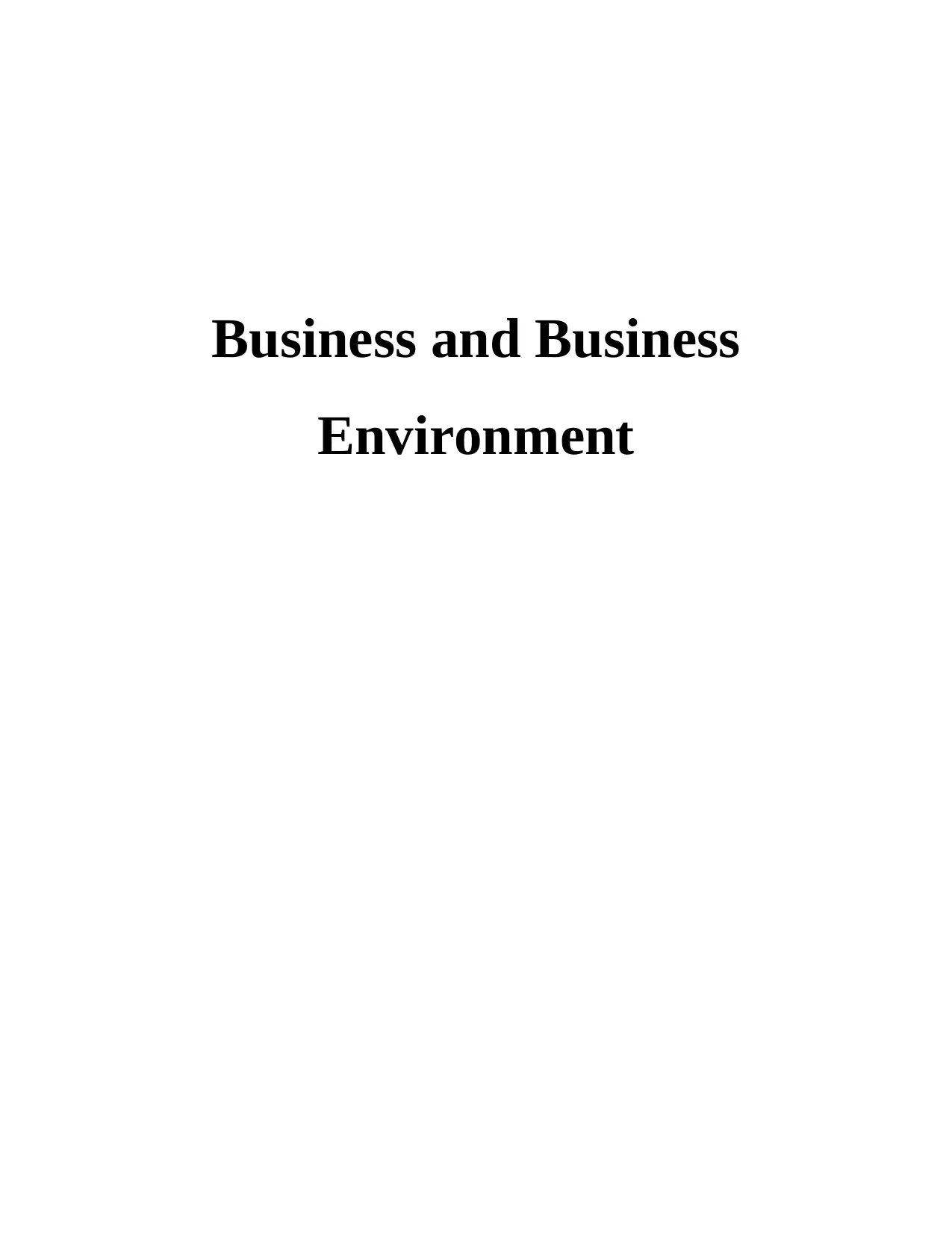
Business and Business
Environment
Environment
Paraphrase This Document
Need a fresh take? Get an instant paraphrase of this document with our AI Paraphraser
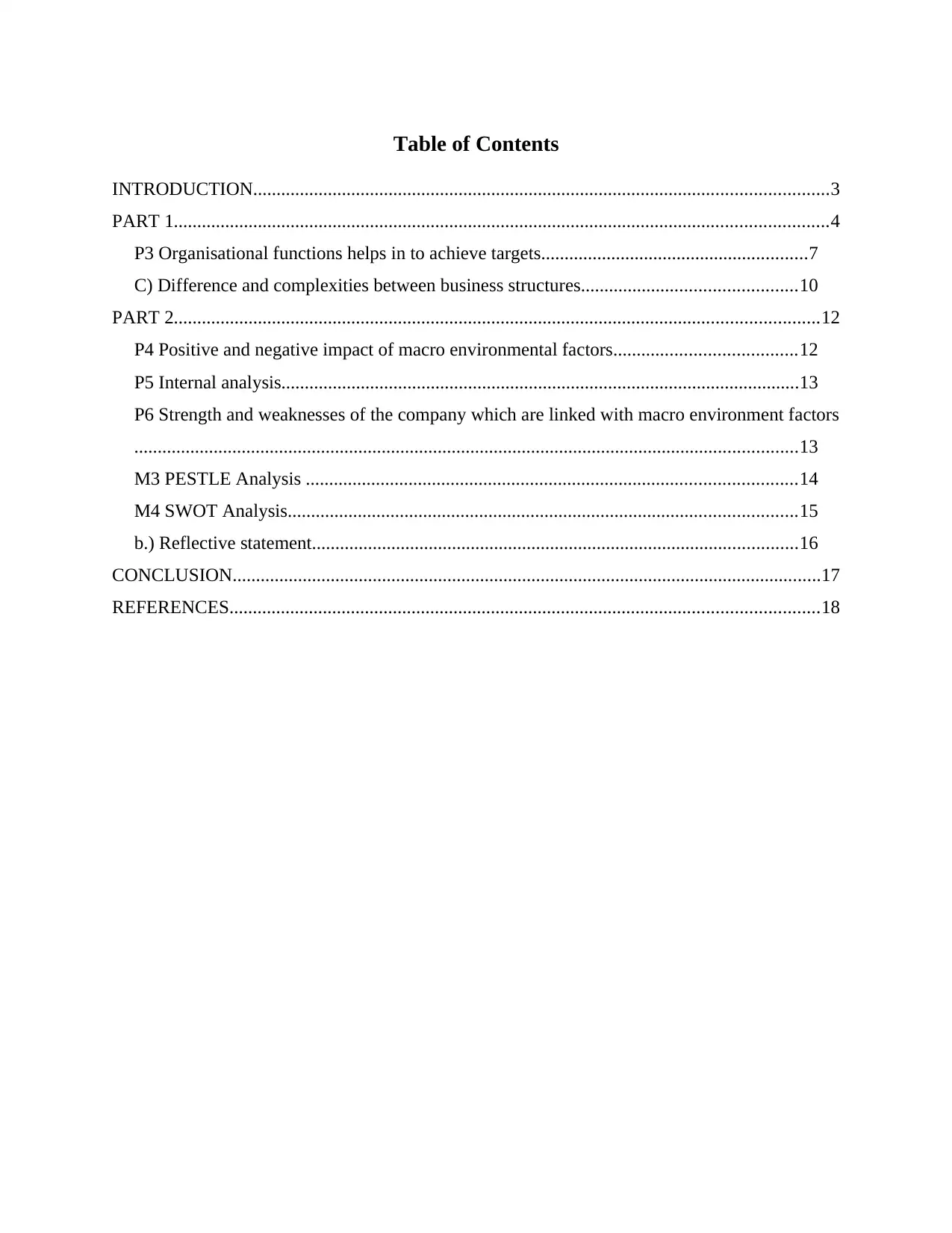
Table of Contents
INTRODUCTION...........................................................................................................................3
PART 1............................................................................................................................................4
P3 Organisational functions helps in to achieve targets.........................................................7
C) Difference and complexities between business structures..............................................10
PART 2..........................................................................................................................................12
P4 Positive and negative impact of macro environmental factors.......................................12
P5 Internal analysis...............................................................................................................13
P6 Strength and weaknesses of the company which are linked with macro environment factors
..............................................................................................................................................13
M3 PESTLE Analysis .........................................................................................................14
M4 SWOT Analysis.............................................................................................................15
b.) Reflective statement........................................................................................................16
CONCLUSION..............................................................................................................................17
REFERENCES..............................................................................................................................18
INTRODUCTION...........................................................................................................................3
PART 1............................................................................................................................................4
P3 Organisational functions helps in to achieve targets.........................................................7
C) Difference and complexities between business structures..............................................10
PART 2..........................................................................................................................................12
P4 Positive and negative impact of macro environmental factors.......................................12
P5 Internal analysis...............................................................................................................13
P6 Strength and weaknesses of the company which are linked with macro environment factors
..............................................................................................................................................13
M3 PESTLE Analysis .........................................................................................................14
M4 SWOT Analysis.............................................................................................................15
b.) Reflective statement........................................................................................................16
CONCLUSION..............................................................................................................................17
REFERENCES..............................................................................................................................18
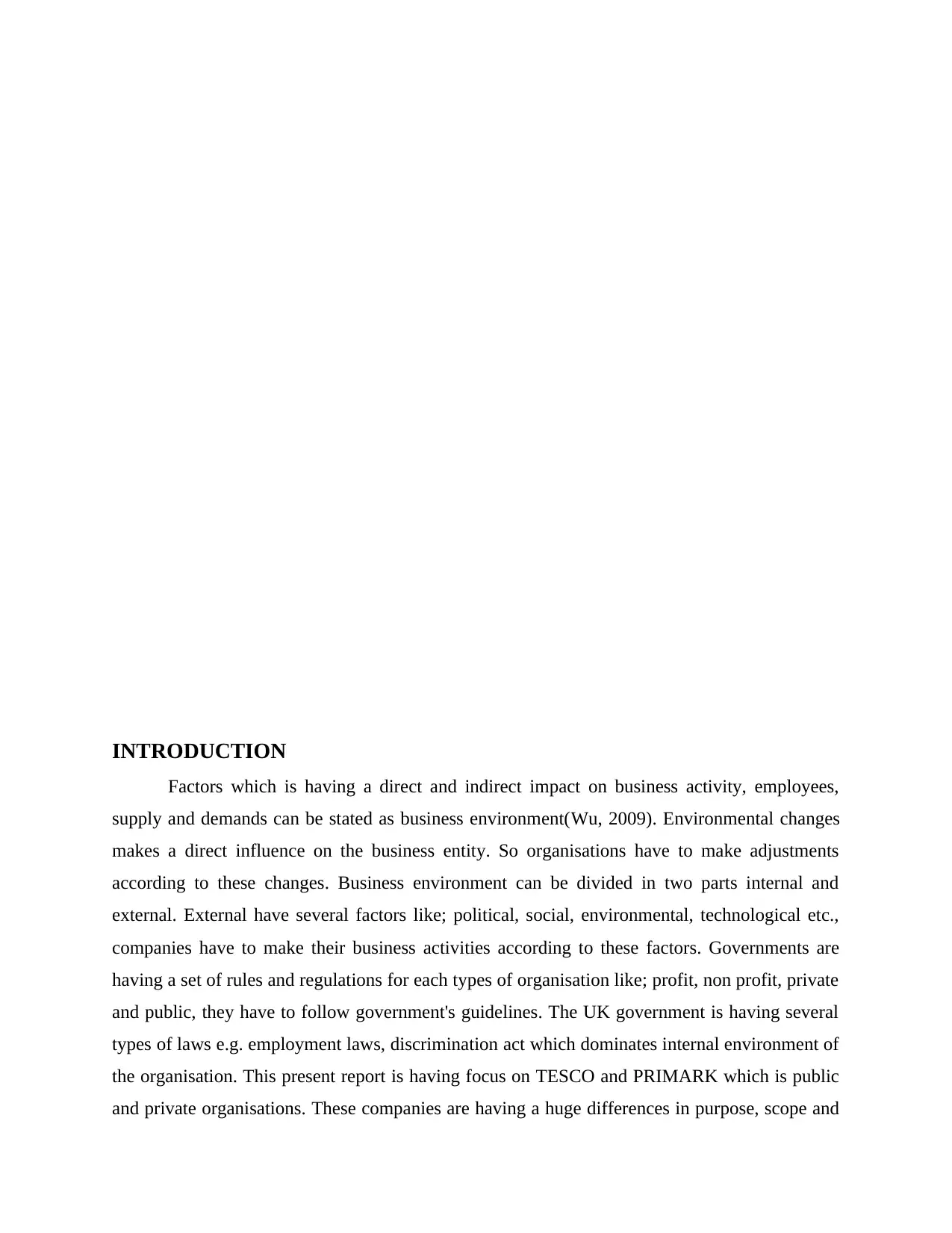
INTRODUCTION
Factors which is having a direct and indirect impact on business activity, employees,
supply and demands can be stated as business environment(Wu, 2009). Environmental changes
makes a direct influence on the business entity. So organisations have to make adjustments
according to these changes. Business environment can be divided in two parts internal and
external. External have several factors like; political, social, environmental, technological etc.,
companies have to make their business activities according to these factors. Governments are
having a set of rules and regulations for each types of organisation like; profit, non profit, private
and public, they have to follow government's guidelines. The UK government is having several
types of laws e.g. employment laws, discrimination act which dominates internal environment of
the organisation. This present report is having focus on TESCO and PRIMARK which is public
and private organisations. These companies are having a huge differences in purpose, scope and
Factors which is having a direct and indirect impact on business activity, employees,
supply and demands can be stated as business environment(Wu, 2009). Environmental changes
makes a direct influence on the business entity. So organisations have to make adjustments
according to these changes. Business environment can be divided in two parts internal and
external. External have several factors like; political, social, environmental, technological etc.,
companies have to make their business activities according to these factors. Governments are
having a set of rules and regulations for each types of organisation like; profit, non profit, private
and public, they have to follow government's guidelines. The UK government is having several
types of laws e.g. employment laws, discrimination act which dominates internal environment of
the organisation. This present report is having focus on TESCO and PRIMARK which is public
and private organisations. These companies are having a huge differences in purpose, scope and
⊘ This is a preview!⊘
Do you want full access?
Subscribe today to unlock all pages.

Trusted by 1+ million students worldwide
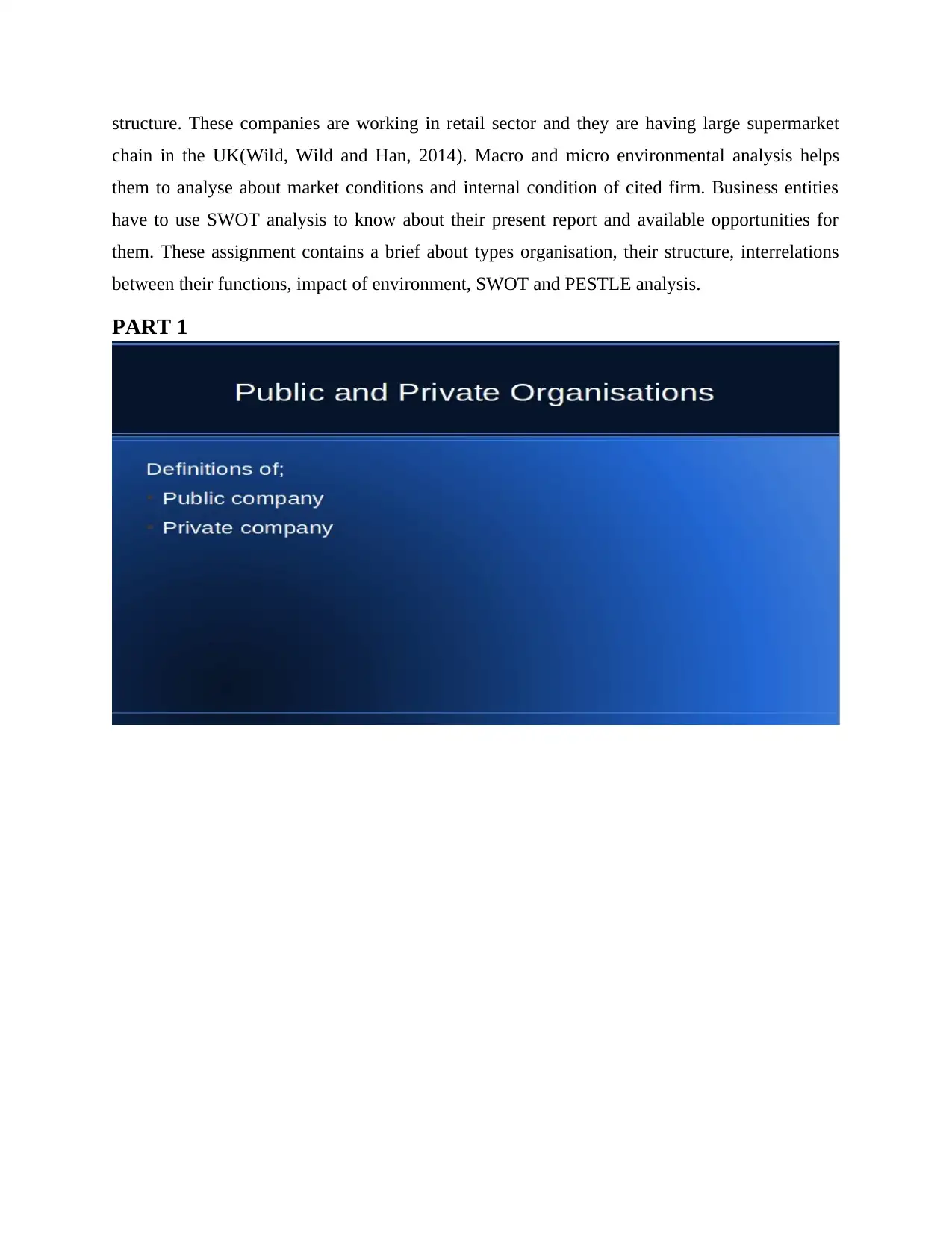
structure. These companies are working in retail sector and they are having large supermarket
chain in the UK(Wild, Wild and Han, 2014). Macro and micro environmental analysis helps
them to analyse about market conditions and internal condition of cited firm. Business entities
have to use SWOT analysis to know about their present report and available opportunities for
them. These assignment contains a brief about types organisation, their structure, interrelations
between their functions, impact of environment, SWOT and PESTLE analysis.
PART 1
chain in the UK(Wild, Wild and Han, 2014). Macro and micro environmental analysis helps
them to analyse about market conditions and internal condition of cited firm. Business entities
have to use SWOT analysis to know about their present report and available opportunities for
them. These assignment contains a brief about types organisation, their structure, interrelations
between their functions, impact of environment, SWOT and PESTLE analysis.
PART 1
Paraphrase This Document
Need a fresh take? Get an instant paraphrase of this document with our AI Paraphraser
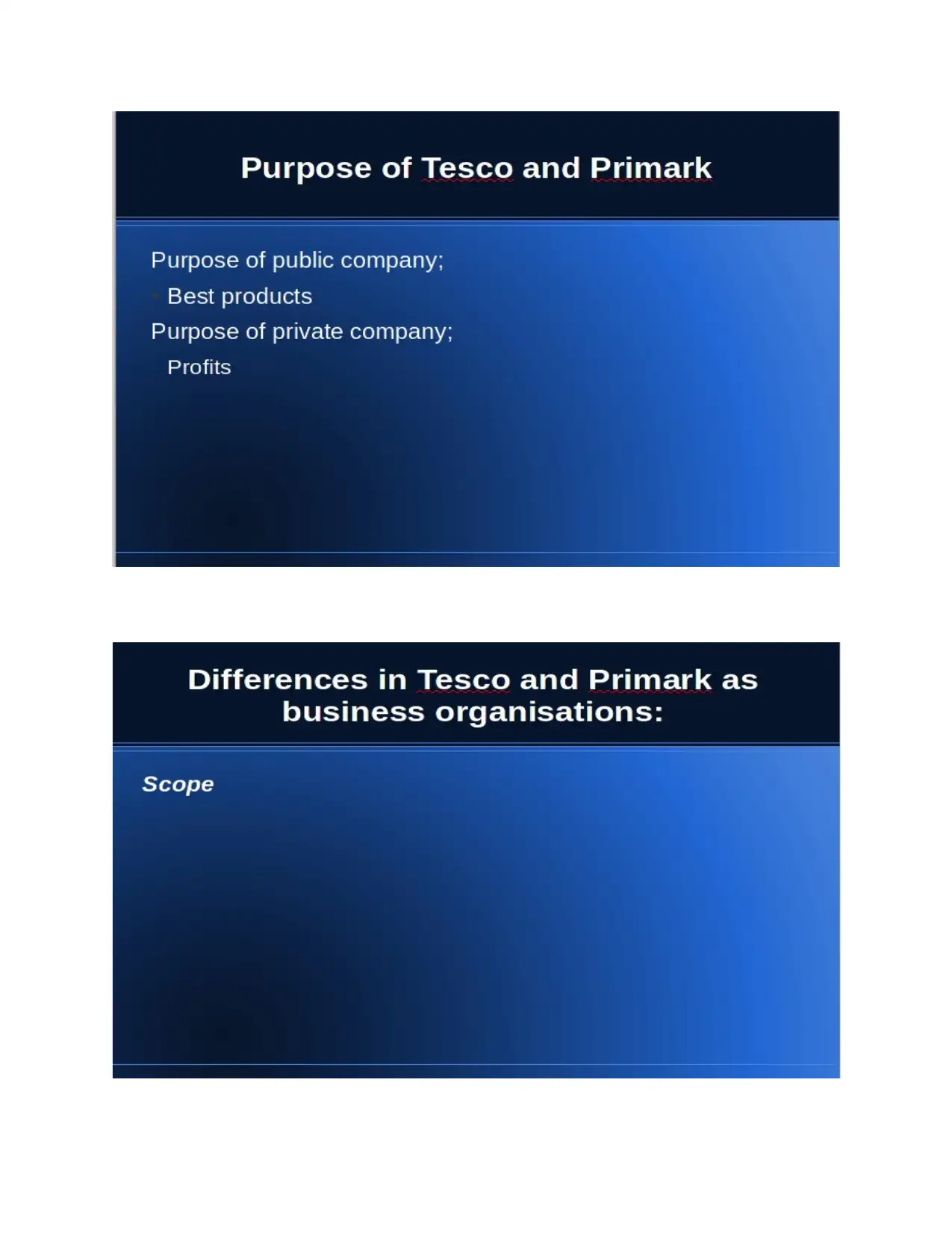
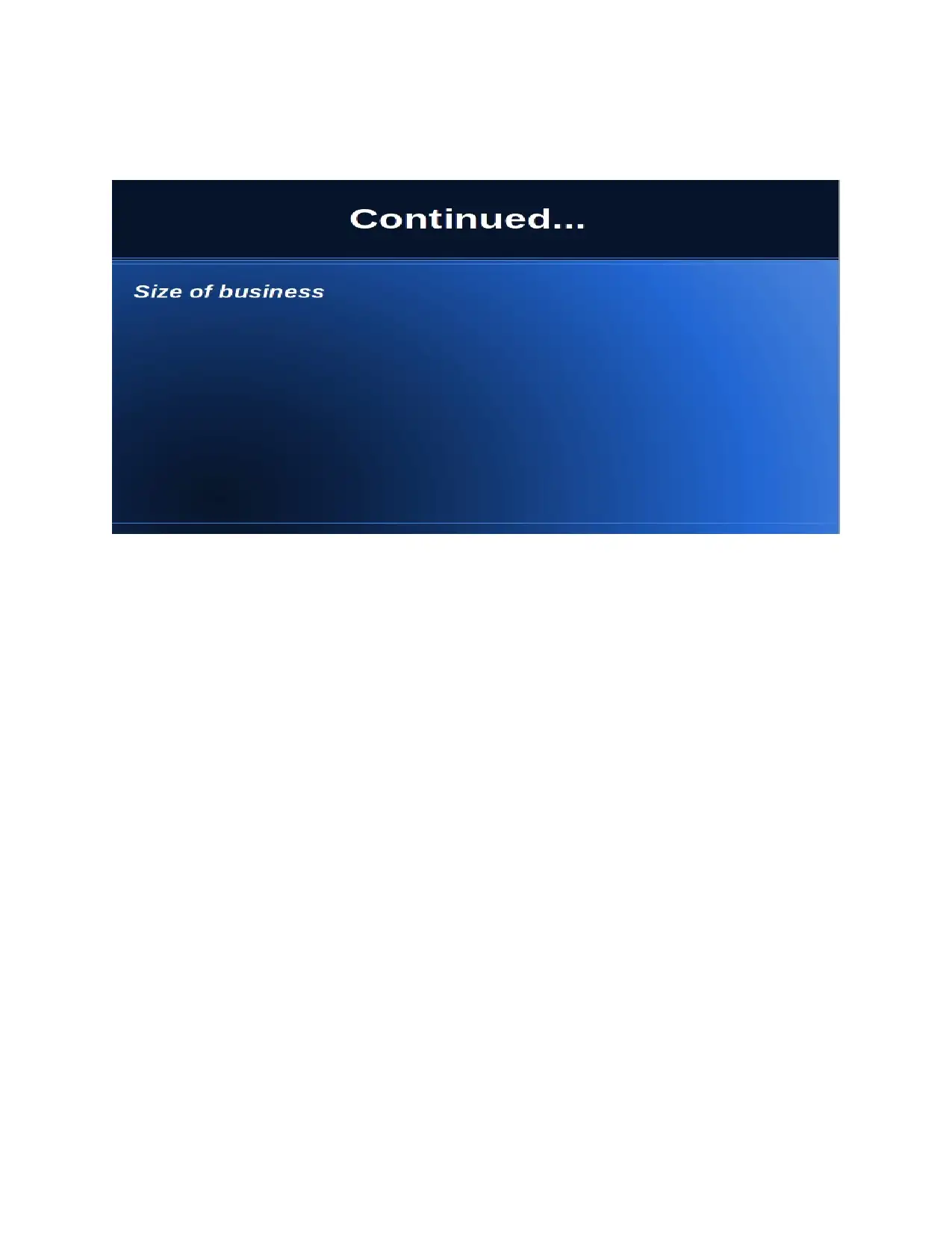
⊘ This is a preview!⊘
Do you want full access?
Subscribe today to unlock all pages.

Trusted by 1+ million students worldwide
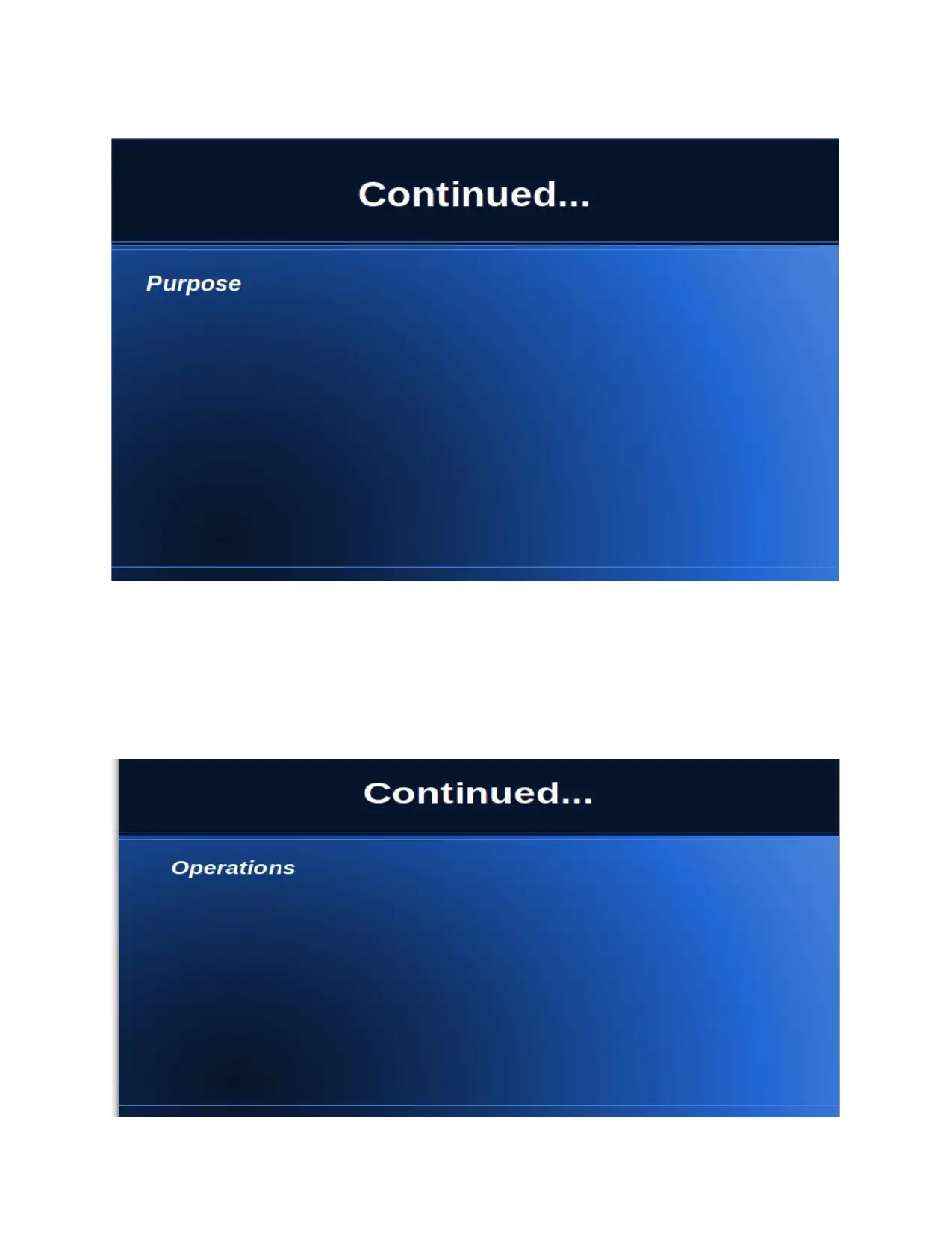
Paraphrase This Document
Need a fresh take? Get an instant paraphrase of this document with our AI Paraphraser
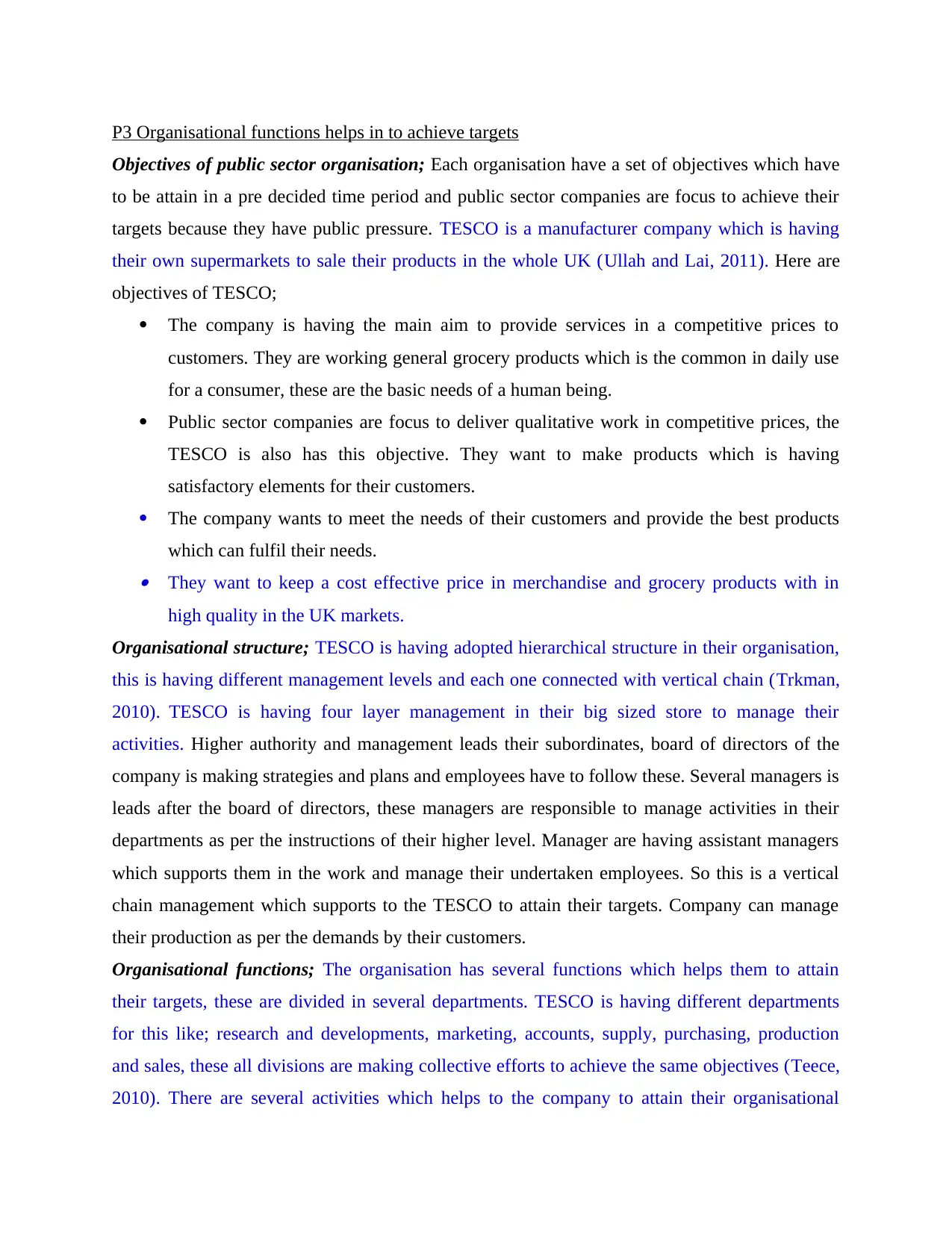
P3 Organisational functions helps in to achieve targets
Objectives of public sector organisation; Each organisation have a set of objectives which have
to be attain in a pre decided time period and public sector companies are focus to achieve their
targets because they have public pressure. TESCO is a manufacturer company which is having
their own supermarkets to sale their products in the whole UK (Ullah and Lai, 2011). Here are
objectives of TESCO;
The company is having the main aim to provide services in a competitive prices to
customers. They are working general grocery products which is the common in daily use
for a consumer, these are the basic needs of a human being.
Public sector companies are focus to deliver qualitative work in competitive prices, the
TESCO is also has this objective. They want to make products which is having
satisfactory elements for their customers.
The company wants to meet the needs of their customers and provide the best products
which can fulfil their needs. They want to keep a cost effective price in merchandise and grocery products with in
high quality in the UK markets.
Organisational structure; TESCO is having adopted hierarchical structure in their organisation,
this is having different management levels and each one connected with vertical chain (Trkman,
2010). TESCO is having four layer management in their big sized store to manage their
activities. Higher authority and management leads their subordinates, board of directors of the
company is making strategies and plans and employees have to follow these. Several managers is
leads after the board of directors, these managers are responsible to manage activities in their
departments as per the instructions of their higher level. Manager are having assistant managers
which supports them in the work and manage their undertaken employees. So this is a vertical
chain management which supports to the TESCO to attain their targets. Company can manage
their production as per the demands by their customers.
Organisational functions; The organisation has several functions which helps them to attain
their targets, these are divided in several departments. TESCO is having different departments
for this like; research and developments, marketing, accounts, supply, purchasing, production
and sales, these all divisions are making collective efforts to achieve the same objectives (Teece,
2010). There are several activities which helps to the company to attain their organisational
Objectives of public sector organisation; Each organisation have a set of objectives which have
to be attain in a pre decided time period and public sector companies are focus to achieve their
targets because they have public pressure. TESCO is a manufacturer company which is having
their own supermarkets to sale their products in the whole UK (Ullah and Lai, 2011). Here are
objectives of TESCO;
The company is having the main aim to provide services in a competitive prices to
customers. They are working general grocery products which is the common in daily use
for a consumer, these are the basic needs of a human being.
Public sector companies are focus to deliver qualitative work in competitive prices, the
TESCO is also has this objective. They want to make products which is having
satisfactory elements for their customers.
The company wants to meet the needs of their customers and provide the best products
which can fulfil their needs. They want to keep a cost effective price in merchandise and grocery products with in
high quality in the UK markets.
Organisational structure; TESCO is having adopted hierarchical structure in their organisation,
this is having different management levels and each one connected with vertical chain (Trkman,
2010). TESCO is having four layer management in their big sized store to manage their
activities. Higher authority and management leads their subordinates, board of directors of the
company is making strategies and plans and employees have to follow these. Several managers is
leads after the board of directors, these managers are responsible to manage activities in their
departments as per the instructions of their higher level. Manager are having assistant managers
which supports them in the work and manage their undertaken employees. So this is a vertical
chain management which supports to the TESCO to attain their targets. Company can manage
their production as per the demands by their customers.
Organisational functions; The organisation has several functions which helps them to attain
their targets, these are divided in several departments. TESCO is having different departments
for this like; research and developments, marketing, accounts, supply, purchasing, production
and sales, these all divisions are making collective efforts to achieve the same objectives (Teece,
2010). There are several activities which helps to the company to attain their organisational
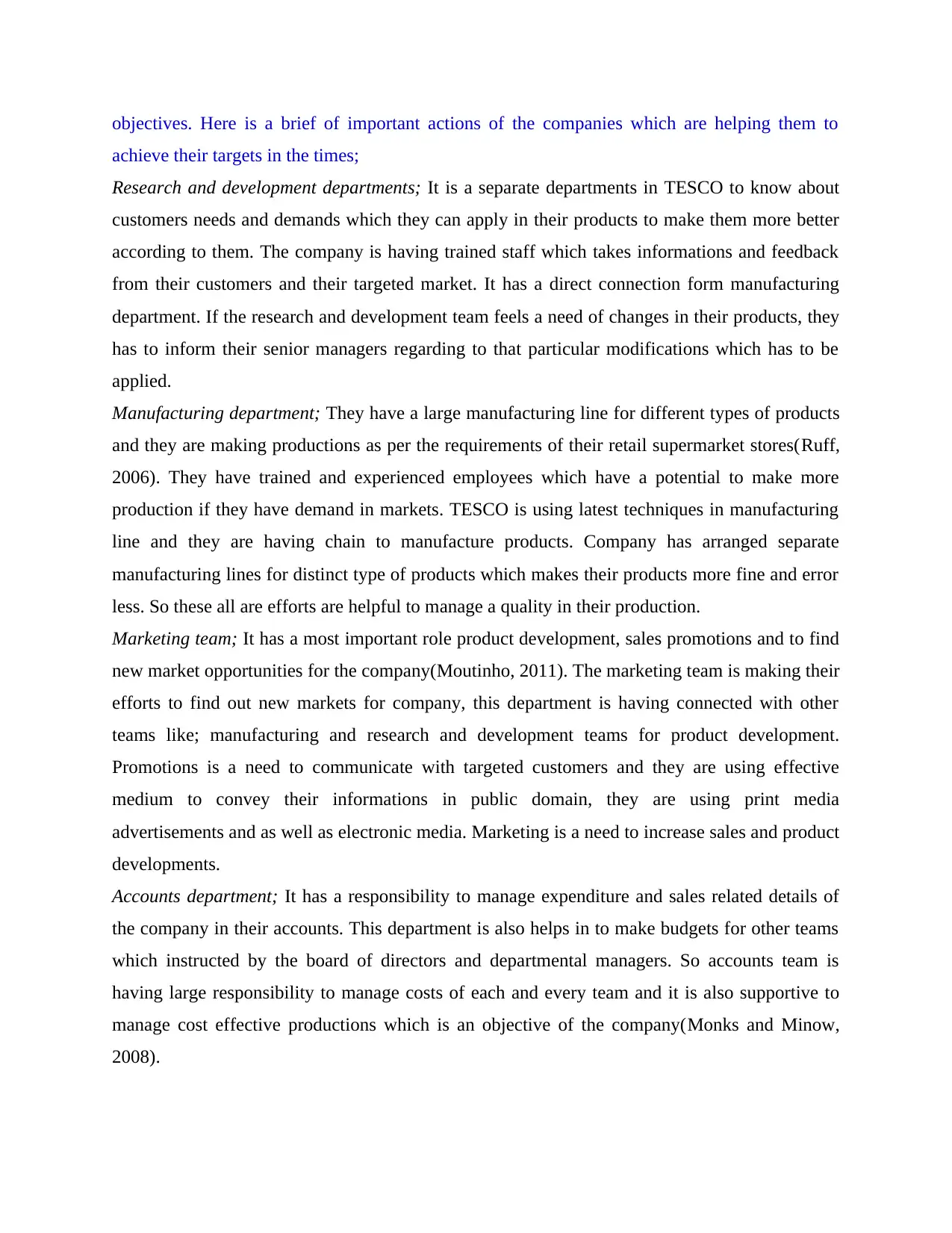
objectives. Here is a brief of important actions of the companies which are helping them to
achieve their targets in the times;
Research and development departments; It is a separate departments in TESCO to know about
customers needs and demands which they can apply in their products to make them more better
according to them. The company is having trained staff which takes informations and feedback
from their customers and their targeted market. It has a direct connection form manufacturing
department. If the research and development team feels a need of changes in their products, they
has to inform their senior managers regarding to that particular modifications which has to be
applied.
Manufacturing department; They have a large manufacturing line for different types of products
and they are making productions as per the requirements of their retail supermarket stores(Ruff,
2006). They have trained and experienced employees which have a potential to make more
production if they have demand in markets. TESCO is using latest techniques in manufacturing
line and they are having chain to manufacture products. Company has arranged separate
manufacturing lines for distinct type of products which makes their products more fine and error
less. So these all are efforts are helpful to manage a quality in their production.
Marketing team; It has a most important role product development, sales promotions and to find
new market opportunities for the company(Moutinho, 2011). The marketing team is making their
efforts to find out new markets for company, this department is having connected with other
teams like; manufacturing and research and development teams for product development.
Promotions is a need to communicate with targeted customers and they are using effective
medium to convey their informations in public domain, they are using print media
advertisements and as well as electronic media. Marketing is a need to increase sales and product
developments.
Accounts department; It has a responsibility to manage expenditure and sales related details of
the company in their accounts. This department is also helps in to make budgets for other teams
which instructed by the board of directors and departmental managers. So accounts team is
having large responsibility to manage costs of each and every team and it is also supportive to
manage cost effective productions which is an objective of the company(Monks and Minow,
2008).
achieve their targets in the times;
Research and development departments; It is a separate departments in TESCO to know about
customers needs and demands which they can apply in their products to make them more better
according to them. The company is having trained staff which takes informations and feedback
from their customers and their targeted market. It has a direct connection form manufacturing
department. If the research and development team feels a need of changes in their products, they
has to inform their senior managers regarding to that particular modifications which has to be
applied.
Manufacturing department; They have a large manufacturing line for different types of products
and they are making productions as per the requirements of their retail supermarket stores(Ruff,
2006). They have trained and experienced employees which have a potential to make more
production if they have demand in markets. TESCO is using latest techniques in manufacturing
line and they are having chain to manufacture products. Company has arranged separate
manufacturing lines for distinct type of products which makes their products more fine and error
less. So these all are efforts are helpful to manage a quality in their production.
Marketing team; It has a most important role product development, sales promotions and to find
new market opportunities for the company(Moutinho, 2011). The marketing team is making their
efforts to find out new markets for company, this department is having connected with other
teams like; manufacturing and research and development teams for product development.
Promotions is a need to communicate with targeted customers and they are using effective
medium to convey their informations in public domain, they are using print media
advertisements and as well as electronic media. Marketing is a need to increase sales and product
developments.
Accounts department; It has a responsibility to manage expenditure and sales related details of
the company in their accounts. This department is also helps in to make budgets for other teams
which instructed by the board of directors and departmental managers. So accounts team is
having large responsibility to manage costs of each and every team and it is also supportive to
manage cost effective productions which is an objective of the company(Monks and Minow,
2008).
⊘ This is a preview!⊘
Do you want full access?
Subscribe today to unlock all pages.

Trusted by 1+ million students worldwide
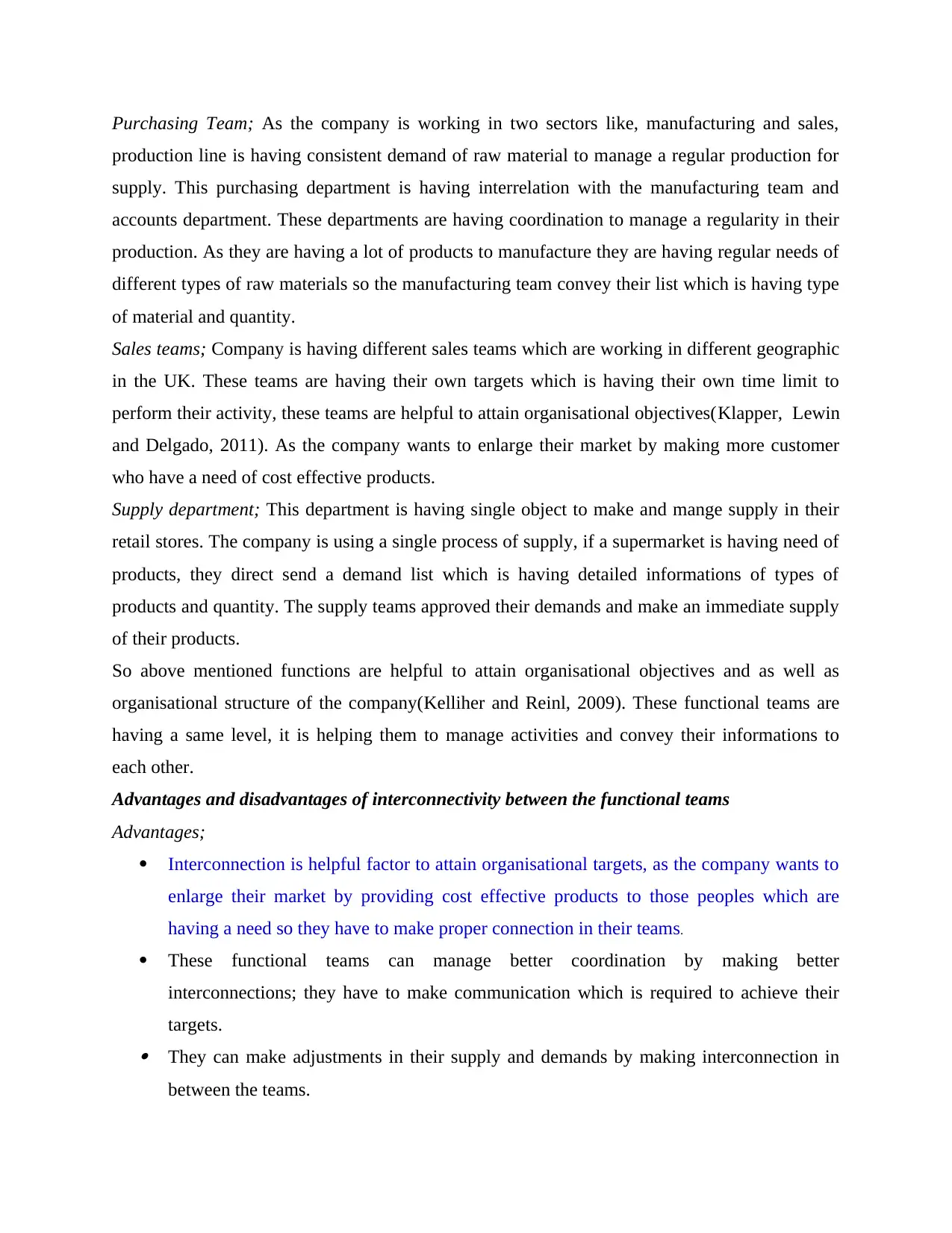
Purchasing Team; As the company is working in two sectors like, manufacturing and sales,
production line is having consistent demand of raw material to manage a regular production for
supply. This purchasing department is having interrelation with the manufacturing team and
accounts department. These departments are having coordination to manage a regularity in their
production. As they are having a lot of products to manufacture they are having regular needs of
different types of raw materials so the manufacturing team convey their list which is having type
of material and quantity.
Sales teams; Company is having different sales teams which are working in different geographic
in the UK. These teams are having their own targets which is having their own time limit to
perform their activity, these teams are helpful to attain organisational objectives(Klapper, Lewin
and Delgado, 2011). As the company wants to enlarge their market by making more customer
who have a need of cost effective products.
Supply department; This department is having single object to make and mange supply in their
retail stores. The company is using a single process of supply, if a supermarket is having need of
products, they direct send a demand list which is having detailed informations of types of
products and quantity. The supply teams approved their demands and make an immediate supply
of their products.
So above mentioned functions are helpful to attain organisational objectives and as well as
organisational structure of the company(Kelliher and Reinl, 2009). These functional teams are
having a same level, it is helping them to manage activities and convey their informations to
each other.
Advantages and disadvantages of interconnectivity between the functional teams
Advantages;
Interconnection is helpful factor to attain organisational targets, as the company wants to
enlarge their market by providing cost effective products to those peoples which are
having a need so they have to make proper connection in their teams.
These functional teams can manage better coordination by making better
interconnections; they have to make communication which is required to achieve their
targets. They can make adjustments in their supply and demands by making interconnection in
between the teams.
production line is having consistent demand of raw material to manage a regular production for
supply. This purchasing department is having interrelation with the manufacturing team and
accounts department. These departments are having coordination to manage a regularity in their
production. As they are having a lot of products to manufacture they are having regular needs of
different types of raw materials so the manufacturing team convey their list which is having type
of material and quantity.
Sales teams; Company is having different sales teams which are working in different geographic
in the UK. These teams are having their own targets which is having their own time limit to
perform their activity, these teams are helpful to attain organisational objectives(Klapper, Lewin
and Delgado, 2011). As the company wants to enlarge their market by making more customer
who have a need of cost effective products.
Supply department; This department is having single object to make and mange supply in their
retail stores. The company is using a single process of supply, if a supermarket is having need of
products, they direct send a demand list which is having detailed informations of types of
products and quantity. The supply teams approved their demands and make an immediate supply
of their products.
So above mentioned functions are helpful to attain organisational objectives and as well as
organisational structure of the company(Kelliher and Reinl, 2009). These functional teams are
having a same level, it is helping them to manage activities and convey their informations to
each other.
Advantages and disadvantages of interconnectivity between the functional teams
Advantages;
Interconnection is helpful factor to attain organisational targets, as the company wants to
enlarge their market by providing cost effective products to those peoples which are
having a need so they have to make proper connection in their teams.
These functional teams can manage better coordination by making better
interconnections; they have to make communication which is required to achieve their
targets. They can make adjustments in their supply and demands by making interconnection in
between the teams.
Paraphrase This Document
Need a fresh take? Get an instant paraphrase of this document with our AI Paraphraser
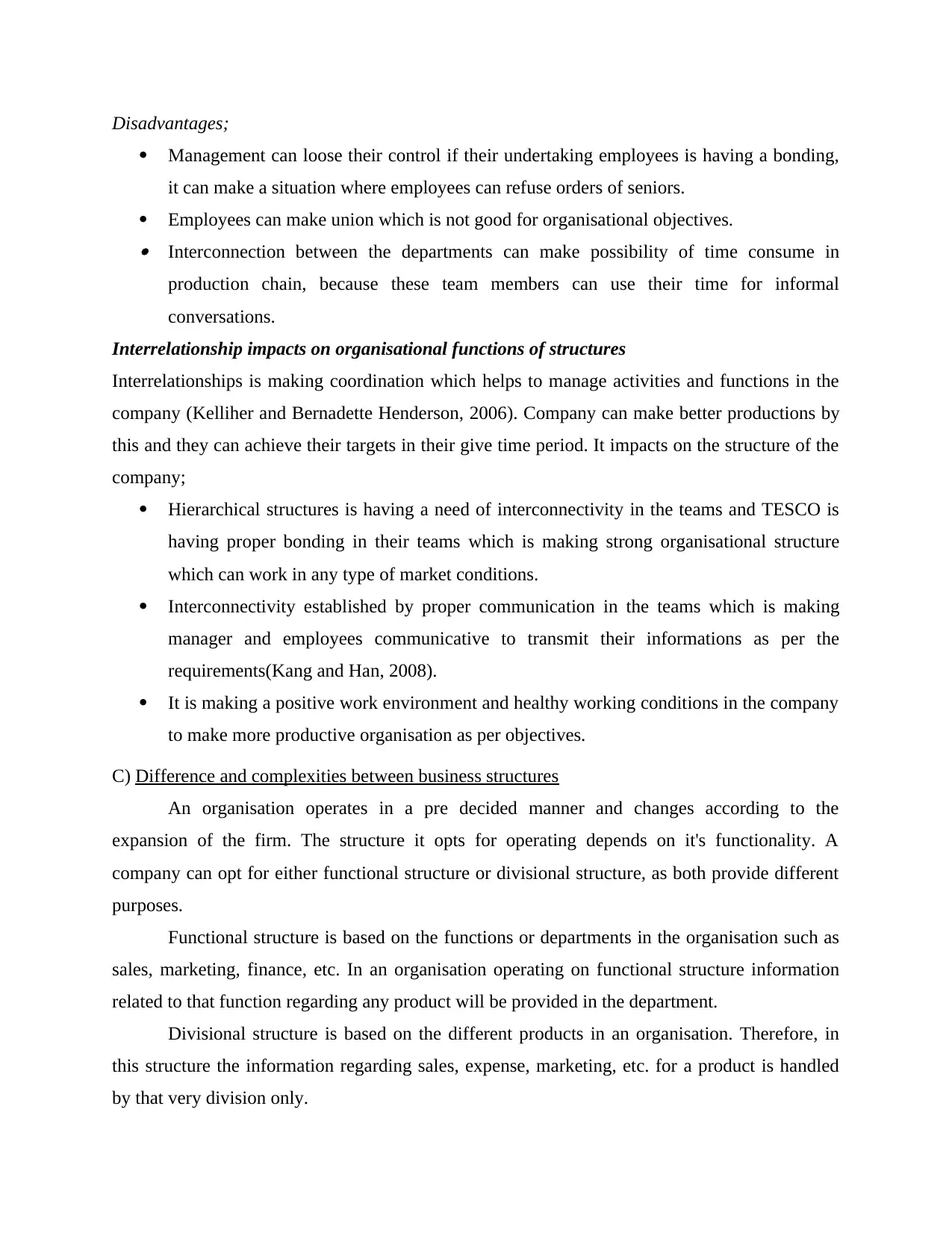
Disadvantages;
Management can loose their control if their undertaking employees is having a bonding,
it can make a situation where employees can refuse orders of seniors.
Employees can make union which is not good for organisational objectives. Interconnection between the departments can make possibility of time consume in
production chain, because these team members can use their time for informal
conversations.
Interrelationship impacts on organisational functions of structures
Interrelationships is making coordination which helps to manage activities and functions in the
company (Kelliher and Bernadette Henderson, 2006). Company can make better productions by
this and they can achieve their targets in their give time period. It impacts on the structure of the
company;
Hierarchical structures is having a need of interconnectivity in the teams and TESCO is
having proper bonding in their teams which is making strong organisational structure
which can work in any type of market conditions.
Interconnectivity established by proper communication in the teams which is making
manager and employees communicative to transmit their informations as per the
requirements(Kang and Han, 2008).
It is making a positive work environment and healthy working conditions in the company
to make more productive organisation as per objectives.
C) Difference and complexities between business structures
An organisation operates in a pre decided manner and changes according to the
expansion of the firm. The structure it opts for operating depends on it's functionality. A
company can opt for either functional structure or divisional structure, as both provide different
purposes.
Functional structure is based on the functions or departments in the organisation such as
sales, marketing, finance, etc. In an organisation operating on functional structure information
related to that function regarding any product will be provided in the department.
Divisional structure is based on the different products in an organisation. Therefore, in
this structure the information regarding sales, expense, marketing, etc. for a product is handled
by that very division only.
Management can loose their control if their undertaking employees is having a bonding,
it can make a situation where employees can refuse orders of seniors.
Employees can make union which is not good for organisational objectives. Interconnection between the departments can make possibility of time consume in
production chain, because these team members can use their time for informal
conversations.
Interrelationship impacts on organisational functions of structures
Interrelationships is making coordination which helps to manage activities and functions in the
company (Kelliher and Bernadette Henderson, 2006). Company can make better productions by
this and they can achieve their targets in their give time period. It impacts on the structure of the
company;
Hierarchical structures is having a need of interconnectivity in the teams and TESCO is
having proper bonding in their teams which is making strong organisational structure
which can work in any type of market conditions.
Interconnectivity established by proper communication in the teams which is making
manager and employees communicative to transmit their informations as per the
requirements(Kang and Han, 2008).
It is making a positive work environment and healthy working conditions in the company
to make more productive organisation as per objectives.
C) Difference and complexities between business structures
An organisation operates in a pre decided manner and changes according to the
expansion of the firm. The structure it opts for operating depends on it's functionality. A
company can opt for either functional structure or divisional structure, as both provide different
purposes.
Functional structure is based on the functions or departments in the organisation such as
sales, marketing, finance, etc. In an organisation operating on functional structure information
related to that function regarding any product will be provided in the department.
Divisional structure is based on the different products in an organisation. Therefore, in
this structure the information regarding sales, expense, marketing, etc. for a product is handled
by that very division only.
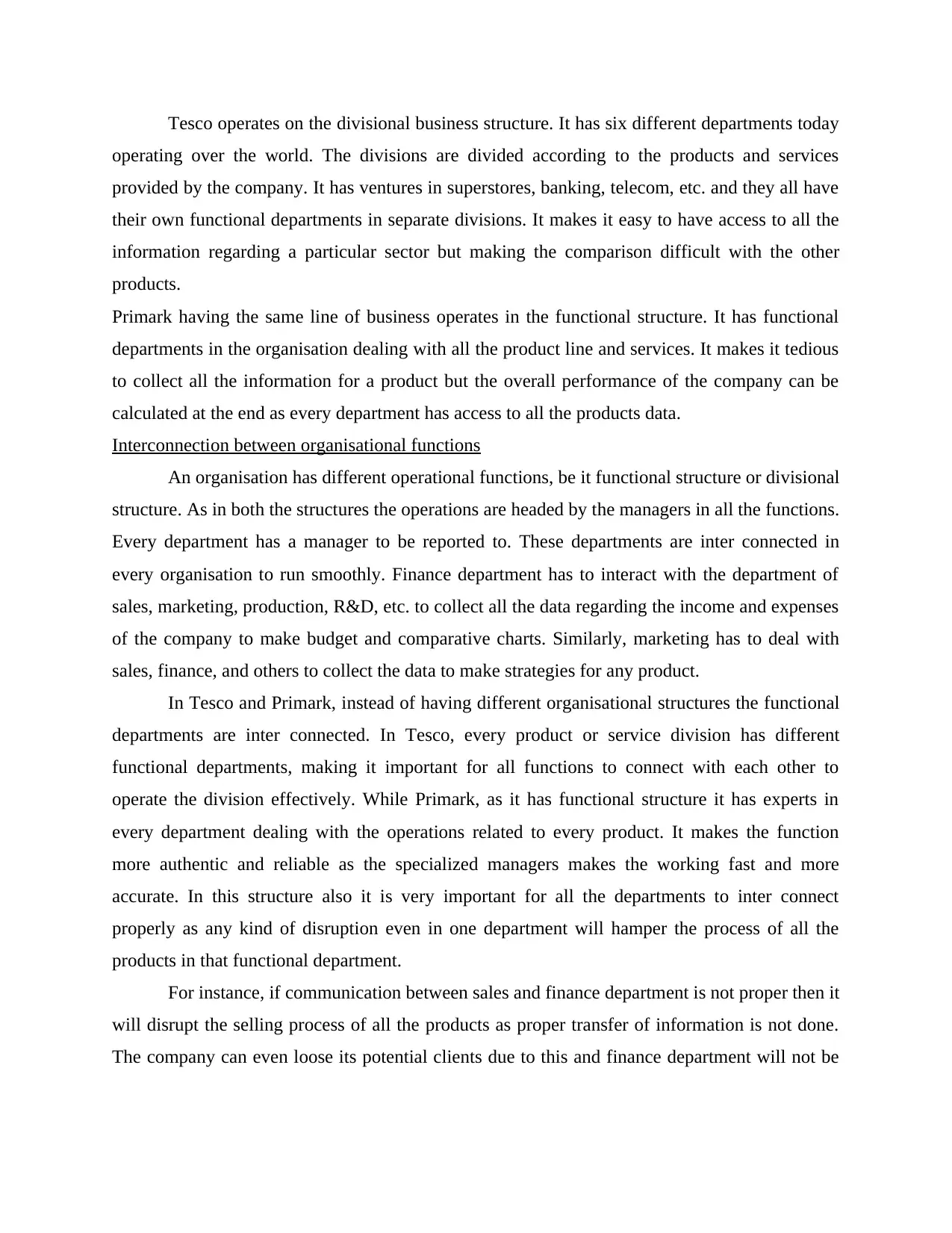
Tesco operates on the divisional business structure. It has six different departments today
operating over the world. The divisions are divided according to the products and services
provided by the company. It has ventures in superstores, banking, telecom, etc. and they all have
their own functional departments in separate divisions. It makes it easy to have access to all the
information regarding a particular sector but making the comparison difficult with the other
products.
Primark having the same line of business operates in the functional structure. It has functional
departments in the organisation dealing with all the product line and services. It makes it tedious
to collect all the information for a product but the overall performance of the company can be
calculated at the end as every department has access to all the products data.
Interconnection between organisational functions
An organisation has different operational functions, be it functional structure or divisional
structure. As in both the structures the operations are headed by the managers in all the functions.
Every department has a manager to be reported to. These departments are inter connected in
every organisation to run smoothly. Finance department has to interact with the department of
sales, marketing, production, R&D, etc. to collect all the data regarding the income and expenses
of the company to make budget and comparative charts. Similarly, marketing has to deal with
sales, finance, and others to collect the data to make strategies for any product.
In Tesco and Primark, instead of having different organisational structures the functional
departments are inter connected. In Tesco, every product or service division has different
functional departments, making it important for all functions to connect with each other to
operate the division effectively. While Primark, as it has functional structure it has experts in
every department dealing with the operations related to every product. It makes the function
more authentic and reliable as the specialized managers makes the working fast and more
accurate. In this structure also it is very important for all the departments to inter connect
properly as any kind of disruption even in one department will hamper the process of all the
products in that functional department.
For instance, if communication between sales and finance department is not proper then it
will disrupt the selling process of all the products as proper transfer of information is not done.
The company can even loose its potential clients due to this and finance department will not be
operating over the world. The divisions are divided according to the products and services
provided by the company. It has ventures in superstores, banking, telecom, etc. and they all have
their own functional departments in separate divisions. It makes it easy to have access to all the
information regarding a particular sector but making the comparison difficult with the other
products.
Primark having the same line of business operates in the functional structure. It has functional
departments in the organisation dealing with all the product line and services. It makes it tedious
to collect all the information for a product but the overall performance of the company can be
calculated at the end as every department has access to all the products data.
Interconnection between organisational functions
An organisation has different operational functions, be it functional structure or divisional
structure. As in both the structures the operations are headed by the managers in all the functions.
Every department has a manager to be reported to. These departments are inter connected in
every organisation to run smoothly. Finance department has to interact with the department of
sales, marketing, production, R&D, etc. to collect all the data regarding the income and expenses
of the company to make budget and comparative charts. Similarly, marketing has to deal with
sales, finance, and others to collect the data to make strategies for any product.
In Tesco and Primark, instead of having different organisational structures the functional
departments are inter connected. In Tesco, every product or service division has different
functional departments, making it important for all functions to connect with each other to
operate the division effectively. While Primark, as it has functional structure it has experts in
every department dealing with the operations related to every product. It makes the function
more authentic and reliable as the specialized managers makes the working fast and more
accurate. In this structure also it is very important for all the departments to inter connect
properly as any kind of disruption even in one department will hamper the process of all the
products in that functional department.
For instance, if communication between sales and finance department is not proper then it
will disrupt the selling process of all the products as proper transfer of information is not done.
The company can even loose its potential clients due to this and finance department will not be
⊘ This is a preview!⊘
Do you want full access?
Subscribe today to unlock all pages.

Trusted by 1+ million students worldwide
1 out of 20
Related Documents
Your All-in-One AI-Powered Toolkit for Academic Success.
+13062052269
info@desklib.com
Available 24*7 on WhatsApp / Email
![[object Object]](/_next/static/media/star-bottom.7253800d.svg)
Unlock your academic potential
Copyright © 2020–2025 A2Z Services. All Rights Reserved. Developed and managed by ZUCOL.





